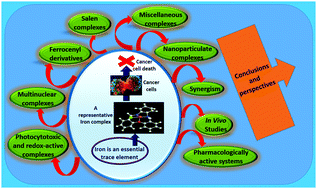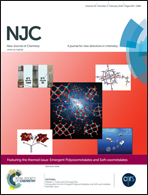Recent advances in iron complexes as potential anticancer agents
Abstract
The revelation of the anticancer properties of cisplatin has inspired research into metal complexes for the treatment of cancer. Several second and third generation cisplatin analogues were developed with claims of good anticancer properties and reduced side effects. However, the persistence of some side effects and the resistance of cancer cells have tempted scientists to explore new metal complexes as anticancer drugs. Therefore, the approach of rational drug design has been extended to the development of non-platinum anticancer drugs, and a large number of such complexes have been developed. Iron complexes are of interest to inorganic medicinal chemists for the development of anticancer agents. The anticancer potency of iron complexes was first reported in ferrocenium picrate and ferrocenium trichloroacetate salts, and was attributed to their ability to form reactive oxygen species, leading to oxidative DNA damage. This review discusses the advances in iron complexes as anticancer agents. The aspects of the photocytotoxicity, redox activity and multinuclearity of anticancer iron complexes are discussed, in addition to discussing ferrocenyl derivatives and salen complexes. The legacy of nanotechnology and synergism in harnessing the potential of iron complexes is highlighted. Finally, the current challenges and future perspectives of iron complexes as anticancer agents are outlined.


 Please wait while we load your content...
Please wait while we load your content...